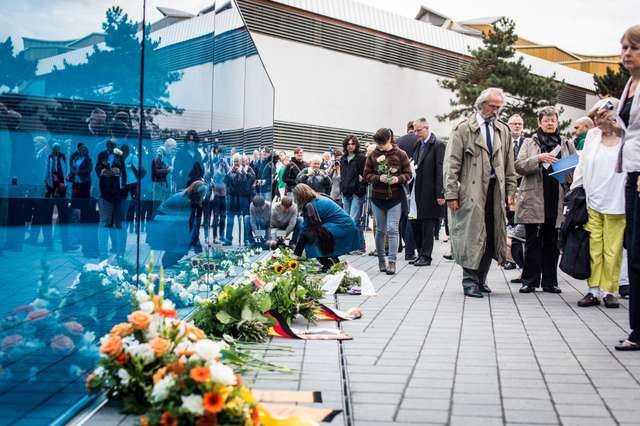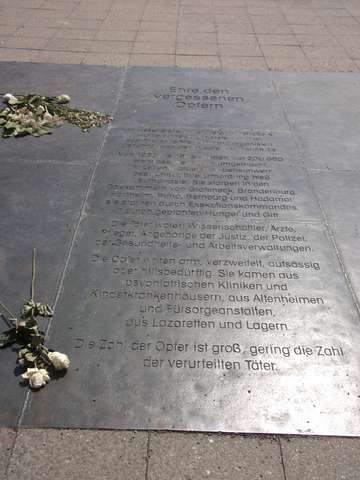Remembrance
Initial memorials commemorating the victims of the »euthanasia« killings originated in the Federal Republic, the GDR and Austria in the 1950s and 1960s. Memorial stones, plaques and other early forms of remembrance largely omitted any information or explanations. As in society at large, the »euthanasia« victims were barely considered within the culture of commemoration.
Since the 1980s, successful initiatives for memorial sites and monuments regarding the topic increasingly came into being. Today, there are exhibitions in all the sites of the former killing stations that provide detailed information about what happened there. Many psychiatric hospitals and institutes in Germany have now set up memorials and exhibitions. They commemorate the patients who, as part of »Aktion T4«, were deported or who fell victim to the National Socialist health policy locally. In recent decades, memorials to the German »euthanasia« campaign have also emerged in eastern European countries.
Unlike other victims of the National Socialist regime, the disclosure of the names of murdered mental patients is, to date, still under discussion. Specific data protection requirements complicate the demand to mention the »euthanasia« victims by name and thus give them back their dignity. Several memorial sites have memorial books, some of which are publicly available. »Stolpersteine« (»stumbling blocks«) in many cities pick up on this approach and mention the names of the victims in front of the place of their last residence.

© Stiftung Denkmal/Marko Priske

© Maike Rotzoll